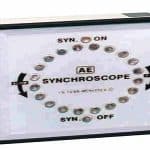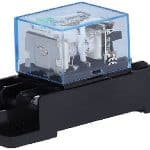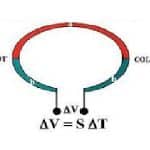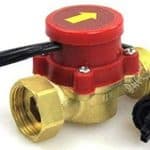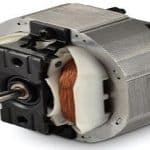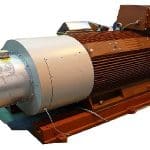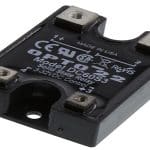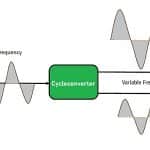A synchroscope is a device within an AC electrical power system that indicates the amount to which two systems like; power networks or generators are synchronized. These two systems should work at a similar frequency & the phase angle for the two power systems to be synchronized in between the systems should be zero. So these devices are useful in measuring & displaying the frequency variation and phase angle between two power systems. When these … [Read more...]
Electromagnetic Relay : Construction, Working, Circuit, Types & Its Applications
A relay is an electrically operated switch that either opens or closes an electrical circuit. Generally, Relays have an induction mechanism at the input part that reflects certain input variables like; voltage, current, power, frequency, impedance, temperature, speed, pressure, etc. It has an actuator at the output part that can understand the ON & OFF control of the controlled circuit. There is an intermediate mechanism between the input & output … [Read more...]
Seebeck Effect : Formula, Differences, Coefficients, Example, Advantages & Its Applications
In the year 1821, German Physicist namely ‘Thomas Seebeck noticed various thermoelectric effect properties. He noticed that an electrical circuit with two dissimilar metals with different temperatures created an EMF at their junctions. Thomas Seebeck observed that the compass needle deflected when he created a closed loop between two different metals, forming a thermocouple. The circuit generates a current known as the thermoelectric current. Previously, … [Read more...]
Flow Switch : Construction, Working, Circuit, Types & Its Applications
The flow in industrial processing is the movement of gases, liquids, and steam throughout a processing system. So, the measurement of flow rate is mainly used for measuring the amount of fluid process media supplied throughout a particular cross-sectional region for each unit of time. In an industrial system, flow rate measurement monitoring is significant to control the secure fluid’s movement. This switch is used to monitor & control the flow within … [Read more...]
Shaded Pole Motor : Construction, Working, Circuit, Characteristics & Its Applications
The shaded-pole motor plays a significant role in low-torque applications. Although these motors have some limitations in terms of efficiency & starting torque, so current technological developments assure an enhanced & more sustainable future for these types of motors. Understanding this motor’s working principles, benefits, and drawbacks with its applications is essential for choosing the right electric motor for a particular application. This … [Read more...]
Induction Generator : Construction, Working, Circuit, Types, Differences & Its Applications
Induction generators have become very popular choices to use in various applications because they are capable of operating at variable speeds & handling fluctuating loads. So these generators have an assuring future within renewable energy systems as well as other applications because of their ongoing investigation & efforts in development. As development efforts and investigation address the challenges which are associated with these generators … [Read more...]
Squirrel Cage Induction Motor : Construction, Working, Types, Differences & Its Applications
An induction motor is a type of electric motor that uses AC, pushed by a magnetic field that turns. These motors are designed with a rotor, a stator & coil that changes energy from electrical to mechanical with electromagnetic induction. Induction motors are very flexible, efficient, and very simple to design, and allow them to be used with almost any electrical load. There are mainly two kinds of induction motors exist like; Squirrel cage & slip … [Read more...]
Proximity Effect : Working, Affecting Factors, Differences, Advantages, Disadvantages & Its Applications
Understanding & mitigating the proximity effect is significant in the electrical system design & operation which uses high-frequency AC. The strength of this effect can be influenced by the conductor's structure, diameter & material. The impact of this effect can be reduced by right conductor spacing and geometric arrangement and also decrease power loss, its detrimental effects on resistance & performance of inductor. It is achievable to … [Read more...]
Solid State Relay : Block Diagram, Circuit, Working, Types, Differences & Its Applications
Generally, both electromechanical and solid-state relays are similar, but solid-state relays electrically isolate the low-voltage input from the output that simply switches and controls an electric load. Electro-mechanical relays have a limited contact life cycle, so they have slower switch speeds, particularly in contractors and large power relays, whereas solid-state relays do not have such limitations. The solid-state relay (SSR) doesn’t have any moving … [Read more...]
Cycloconverter : Circuit, Working, Types, Control Strategies, Characteristics & Its Applications
A power supply is used to change the electric current from a source to the voltage, frequency & current to power the electric load. Sometimes these are called electric power converters. Power supply is classified into two categories; AC & DC power supply. We know that AC power is more economical and it can be used for transmission thus most of the electrical devices or machines run on AC power. However, the typical frequency & voltage supplied … [Read more...]
